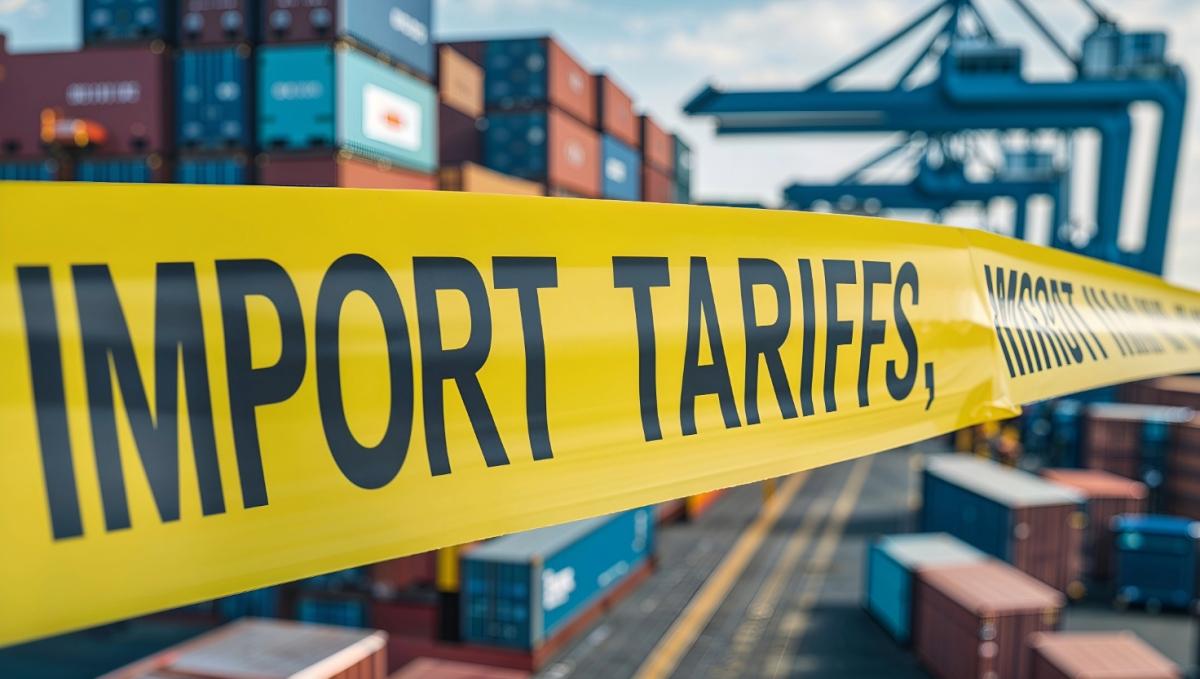US Tariff Shifts Undermining eCommerce

- Sep 5, 2025 modified: Sep, 17 2025
US Tariff Shifts Undermining eCommerce
The Hidden Costs: How Sudden Tariff Shifts Are Undermining eCommerce Operations
Recent shifts in U.S. trade policy, like the abrupt removal of de minimis treatment for goods from China and the rollout of new baseline tariffs, are creating a ripple effect across online stores large and small.
Sellers who once thrived on international fulfillment or dropshipping now face unexpected duties, rising shipping costs, and confused customers who don't understand why they're being hit with surprise fees at delivery.
Let's explore how these abrupt tariff changes are disrupting global commerce for online businesses - and what sellers can do to adapt to a trade environment that seems to shift overnight.
The Policy Problem
Tariffs aren't new, but the way they're being introduced lately is.
For years, U.S. regulations allowed imports valued under $800 to enter the country duty-free - a huge advantage for businesses sourcing goods from overseas. But in early 2024, that rule was suddenly eliminated for imports from China, leaving thousands of small sellers scrambling
Then came the April 2 announcement: a blanket 10% tariff on a wide range of imports, followed by a growing list of product-specific duties targeting multiple countries. Many sellers didn't find out through official channels, they learned about it when shipments got flagged at customs or when fulfillment costs unexpectedly jumped.
This reactive, piecemeal approach to trade policy creates an environment where e-commerce merchants can't confidently plan ahead. What worked yesterday might not work today - and no one's sure what tomorrow will bring.
Small eCommerce Sellers Left in the Dark
Small eCommerce sellers - the kind of entrepreneurs running Shopify stores out of home offices or garages - tariff changes often feel like a sudden storm with no umbrella in sight.
Many of these sellers rely on cross-border dropshipping or low-volume importing, and the system seemed manageable for years.
Products are shipped directly from overseas suppliers with few or no extra fees, and international customers have become used to smooth, relatively cheap delivery. But small sellers are most exposed when tariff policies shift without warning or clarity.
Without the budget for expert help or the infrastructure to absorb rising costs, many small businesses find themselves reacting too late. For example, a U.S.-based seller working with a Chinese manufacturer may only discover a new tariff when a package gets stuck at customs - or worse, when a customer refuses to pay unexpected duties at their door.
Tools Are Not Enough
To their credit, platforms like Shopify, Etsy, and Amazon have rolled out features to help sellers manage international shipping, duties, and taxes.
Shopify, for instance, offers options like Delivered Duty Unpaid (DDU) labels and automated tax calculations at checkout.
Apps like Printful and Syncee even allow sellers to source from suppliers in countries with more favorable trade agreements.
These are helpful steps but they can only go so far.
The problem isn't just about having tools; it's about understanding when, where, and how to use them. For example, DDU shipping means the customer pays duties on delivery - but if the seller doesn't clearly communicate this, it creates a negative customer experience. Likewise, choosing a “tariff-friendly” supplier is easier said than done when tariff codes are difficult to interpret and constantly changing.
Navigating the New Reality
In a trade landscape defined by uncertainty, eCommerce businesses need to think strategically and act fast. Here are ways sellers are adapting to this volatile environment:
1 Diversify your supplier base
Many merchants are reducing reliance on Chinese suppliers by sourcing from countries with more favorable trade terms, such as Vietnam, India, Mexico, or local/domestic options. This helps cushion against future tariff shocks and reduces geopolitical risk.
2 Invest in clear customer communication
If customers might face duties at delivery, they need to know upfront. Smart sellers are updating:
- Shipping policies on product pages
- Automated checkout notifications
- Order confirmation emails
Transparency avoids abandoned carts, negative reviews, and costly returns.
3 Use tools wisely - but don't depend on them blindly
Shopify, Amazon, and other platforms offer valuable tariff management tools, but they work best when paired with seller knowledge. Learn how DDU and DDP shipping options work, and make sure the right duties and taxes are applied at checkout.
4 Partner with customs brokers or 3PL consultants (if feasible)
For growing stores, working with a broker or logistics expert can save time, prevent errors, and provide much-needed clarity on classification codes and country-specific import rules.
5 Stay informed and connected
Being plugged in helps sellers respond quickly to new changes, and spot trends before they become problems.
- Follow updates from trade authorities (e.g., USTR, CBP)
- Join seller forums and Reddit communities
- Subscribe to platform-specific newsletters (Shopify, Flexport, etc.)
6 Embrace flexibility and long-term thinking
Sometimes, short-term losses are the price of maintaining trust. Sellers who preserve customer loyalty now, by honoring shipping issues or absorbing duties, often find that repeat business pays off in the long run.
Adapting doesn't mean having all the answers - it means staying prepared, staying informed, and pivoting when needed.
In a world of shifting tariffs and unpredictable trade rules, agility is the new competitive advantage.
When Policy Becomes a Business Risk
Tariffs were once a line item, now they're a daily disruption.
For e-commerce sellers, especially small and midsize businesses, the cost of trade isn't just measured in dollars - it's measured in uncertainty, lost time, frustrated customers, and stalled growth.
What's needed isn't just better tools - it's better policy. Transparent, consistent, and consultative trade practices would allow businesses to plan, adapt, and thrive. Until then, eCommerce sellers must stay informed, stay flexible, and stay ahead of the next curveball.
Because in today's global market, navigating tariffs isn't just a logistics issue - it's a survival strategy.
Aust Post suspends US services
In response to new US tariffs on low-value parcels, particularly the removal of the "de minimis" exemption which previously allowed goods under $US800 ($1,230 AUD) to enter the US duty-free.
"Australia Post plans to resume postal sending to the US and its overseas territories on or before Thursday 25 September 2025."
source: Aus Post
Australia Post has partnered with Zonos®, an authorised US Customs and Border Protection (CBP) third-party provider. There is a saving of $400 to join Zonos via Aust Post.
If you’re shipping parcels under $800 USD from Australia to the United States using Australia Post, you must prepay duties before your parcel crosses the border. So any eCommerce solution must be able to detect if a client is from US or its territories and charge the appropriate tariff.
Alternatives to using Aust Post - Case Study
Surf, Skate and Cycle racks provider Ghostracks.com.au ships a considerable number of racks into the US. US is in many ways the home of surf culture. the Ghost Racks marketing team looked at alternatives to Aust Post.
DHL
- Every item must be classified with an accurate HS Code to determine applicable duties and taxes.
- Under new US rules, duties and taxes must be prepaid before shipment arrival.
- Decide whether you or DHL will act as the Importer of Record (IOR). If you're the IOR, you'll need a Customs Bond.
- DHL offers help to classify products correctly and ensure compliance with new tariff regulations
- DHL offers in-house customs clearance with licensed brokers
References
Shopify. (2024, April). Navigating tariffs: Your guide to international shipping on Shopify. Shopify. https://www.shopify.com/au/blog/international-import-shipping
United States Trade Representative (USTR). (2024). Fact sheets and press releases. https://ustr.gov/about-us/policy-offices/press-office/fact-sheets
U.S. Customs and Border Protection (CBP). (n.d.). Trade. https://www.cbp.gov/trade
Flexport. (2024). Tariff management and global logistics insights. https://www.flexport.com
Search News Articles...
Recent Articles

Most AI Websites Fail to Rank
- Nov 18 2025
- /
- 152

Sitemap.xml Best Practices
- Oct 14 2025
- /
- 351

Fake Reviews on Google My Business
- Oct 07 2025
- /
- 359

Sending Emails from Code
- Sep 17 2025
- /
- 474

US Tariff Shifts Undermining eCommerce
- Sep 05 2025
- /
- 593

Small Business Success Formula
- Aug 23 2025
- /
- 475

Do Strong CTAs Help or Hurt Your Website?
- Jul 31 2025
- /
- 669

AI Crawlers vs Search Crawlers
- Jul 04 2025
- /
- 773

AI vs. Human Writing - How to detect Ai
- Jun 26 2025
- /
- 1161

Optimising for Brand SEO
- May 12 2025
- /
- 876
View All News Articles
Categories
A Gold Coast SEO and Web Developer